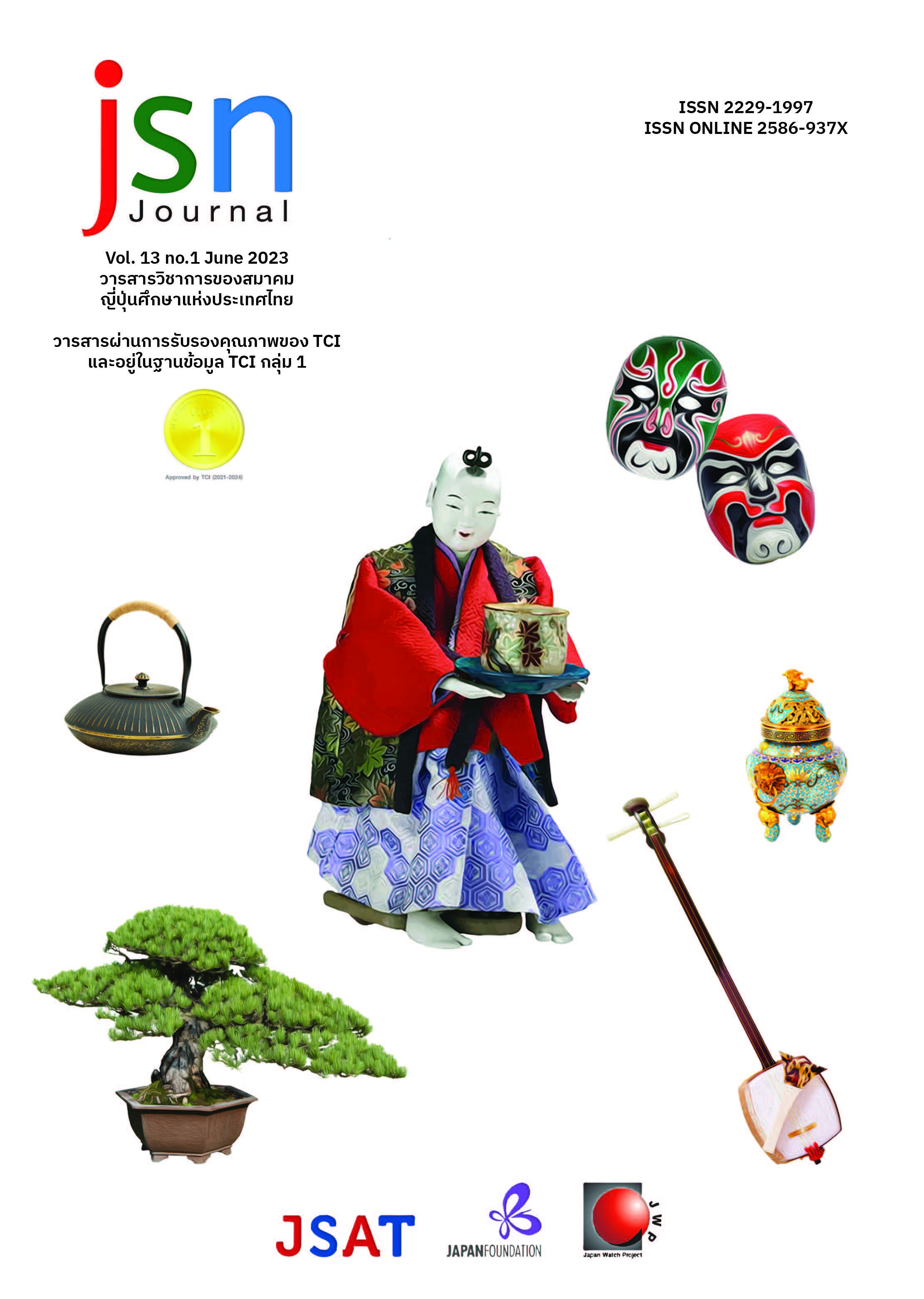Loanwords in Japanese: The Analysis of Online News and Twitter
Main Article Content
Abstract
This research studies loanwords from two data resources: online news in Yahoo.co.jp (formal language) and Twitter’s posted messages (non-formal language) in order to investigate the quantity and variety of loanwords. The focuses were on the phonological system, word system, and grammatical system of Japanese loanwords and the usages of those words. The findings showed that there was a variety of loanword usages, as found in previous study (Fukuda et al., 2007). The loanwords were adopted in the phonological system, word system, and grammatical system. Nevertheless, the specific findings found in this study related to previous study (Kokuritsukokugokenkyusho, 2004; Yoneda, 1996) were as follows: (1) loanwords were used to show modernity and to follow a trend rather than to express concepts or things for which there was no original Japanese equivalent; (2) the loanwords pill, miss, and attend were used according to narrow meanings and were different from when they were used in English; and (3) there were four words—pāsonarutore, kinryokutore, kurejittoka, mūbīchike—that “broke” the phonological rules and the 2-4 mora-word formation.
Article Details

This work is licensed under a Creative Commons Attribution-NonCommercial-NoDerivatives 4.0 International License.
ข้อความและข้อคิดเห็นต่างๆ ในบทความเป็นของผู้เขียนบทความนั้นๆ ไม่ใช่ความเห็นของกองบรรณาธิการหรือของวารสาร jsn Journal
References
Ito, Junko. (1990). Prosodic minimality in Japanese. CLS 26-II: Papers from the Parasession on the Syllable in Phonetics and Phonology, 213–239.
Oxford Advanced Learner’s Dictionary. (2000, 6th edition). UK: Oxford University Press.
Riney, T., & Anderson-Hsieh, J. (1993). Japanese Pronunciation of English. JALT Journal, 15(1), 21-36.
Tsunoda, W. (1988). The Influx of English in Japanese Language and Literature. World Literature Today, 62(3), 425-430. https://doi.org/10.2307/40144293
Yoneda, S. (1996). The English loan word Pantsu (pants) in Japanese : A preliminary study of the influence of Americanization on Japanese loan words. Bulletin of Hokuriku Gakuin Junior College, (28), 163-171. http://id.nii.ac.jp/1273/00000577/
広辞苑 (第7版) (2021). 東京: 岩波書店.
窪薗晴夫 (2002).『新語はこうして作られる』東京:岩波書店.
窪薗晴夫 (2010).「語形成と音韻構造:短縮語形成のメカニズム」『国語研プロジェクトレビュー』3, 17-34.
国立国語研究所 (1990).「外来語の形成とその教育」『国立国語研究所学術情報リポジトリ』, 1-174. http://doi.org/10.15084/00001840
国立国語研究所 (2004).「外来語に関する意識調査: 全国調査」『国立国語研究所学術情報リポジトリ』, 1-158. http://doi.org/10.15084/00002303
佐藤貴美子 (1996). 「外来語と英語: 意味用法のズレ」『盛岡大学英語英米文学会会報』7, 53-63.
総務省情報通信政策研究所 (2020).『令和元年度 情報通信メディアの利用時間と情報行動に関する調査報告書』
鳥飼 玖美子 (2007). 「カタカナ語に見る意味のずれ(特集 外来語大解剖--あえて使うか、言い換えか)」『言語』36(6), 52-59.
那須雅之 (1992).「外来語 の受容 と消化 ・吸収」『中国語学』1992 (239), 144-153. https://doi.org/10.7131/chuugokugogaku.1992.144
日本語教育学会編 (2000).『日本語教育事典(縮刷版)』東京: 大修館書店.
福田亮・伊藤雅光・塩田雄大 (2007). 「日本語の中の外来語と外国語―新聞、雑誌、テレビ―」『独立行政法人 国立国語研究所 第30回「ことば」フォーラム』国語研究所講堂.
文昶允 (2017).「短縮語の形成方略に観察される 世代差について─前部要素の2モーラ目に長音を含む短縮外来語とその選好傾向─」『日本語の研究』13(3), 18-34.
山下喜代 (2007).「現代日本語の語構成要素―外来語を中心にして―」『文学部紀要』48, 95-110.


